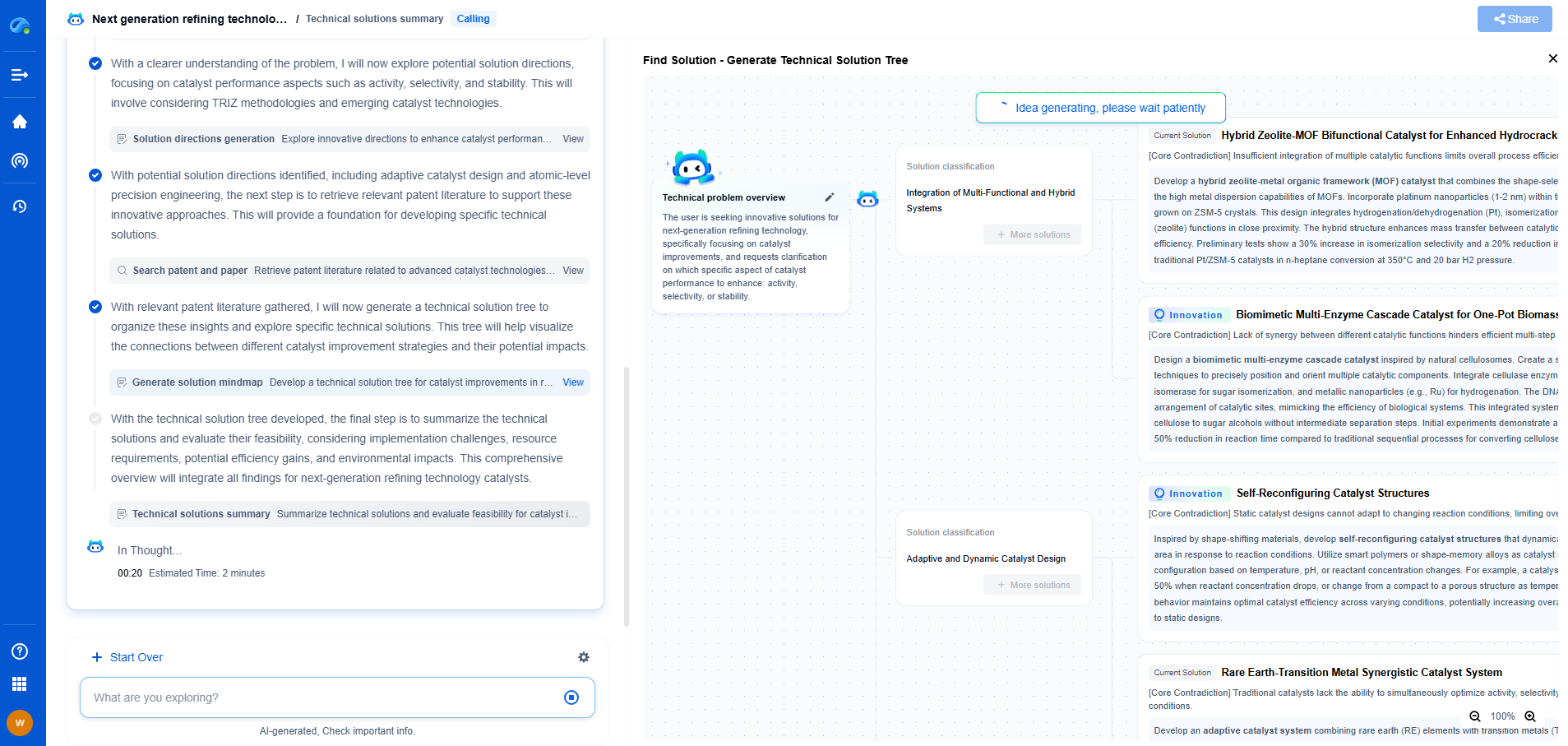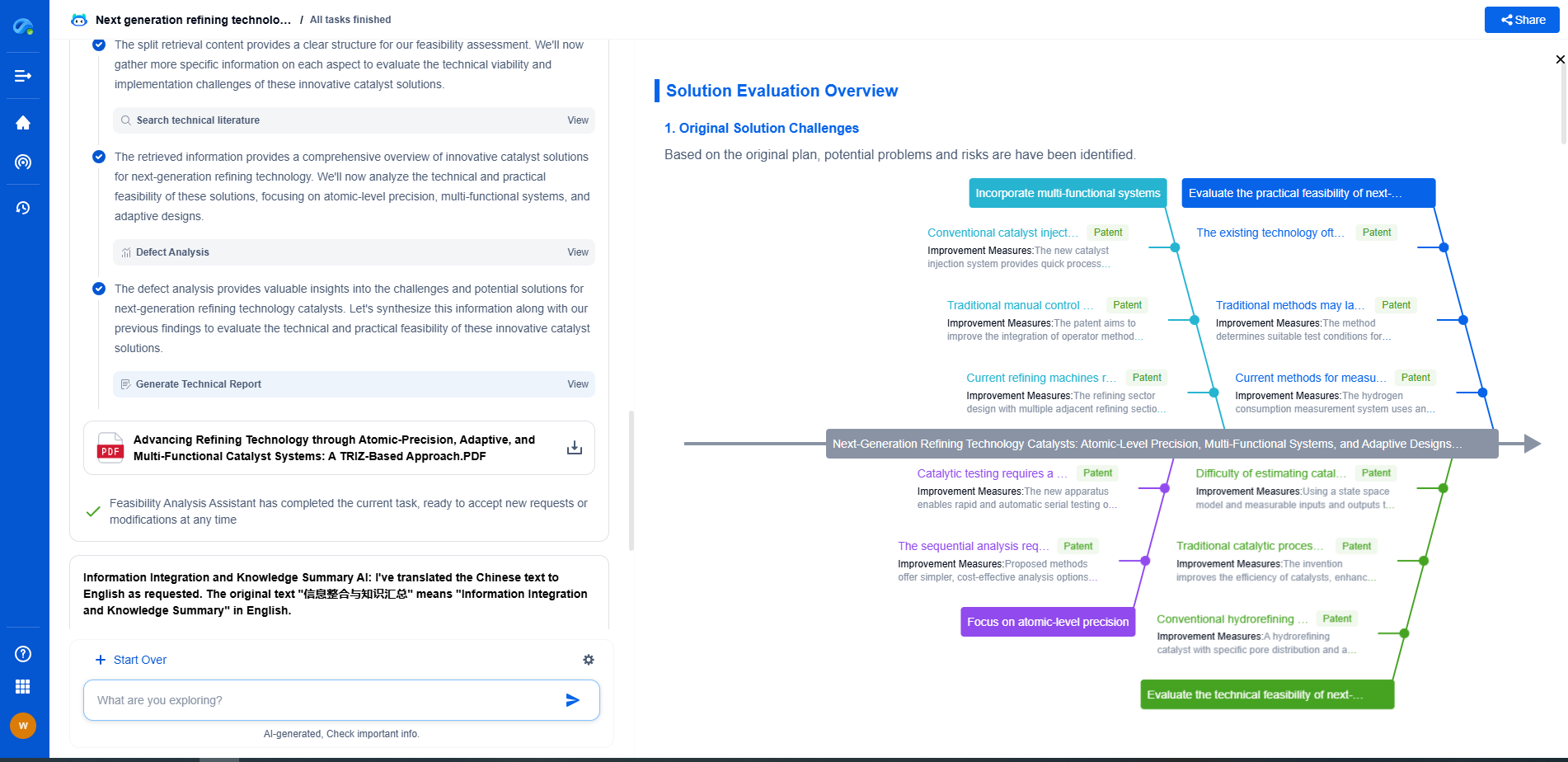Etch mask patterning 101: Photoresist vs. hard mask selection
JUL 28, 2025 |
Understanding Etch Mask Patterning
Etch mask patterning is a process used in semiconductor manufacturing to create intricate patterns on substrates. This is achieved by covering areas that need protection during etching with a masking material. The choice between photoresist and hard mask materials significantly impacts the etching process's efficiency and outcome.
Photoresist Masks: The Flexible Option
Photoresists are light-sensitive materials applied to a substrate to form a patterned protective layer. They are classified into positive and negative photoresists, each having distinct behaviors when exposed to light.
Positive photoresists become soluble when exposed to light, allowing the exposed regions to be washed away. This results in a pattern that matches the photomask used. On the other hand, negative photoresists harden upon exposure, so the unexposed areas are removed, creating a pattern that is the inverse of the photomask.
Key Advantages of Photoresists:
1. Versatility: Photoresists can be fine-tuned to accommodate various processing needs, making them suitable for a wide range of applications.
2. Simplicity: They are relatively easy to apply and remove, which simplifies the overall lithography process.
3. Cost-effectiveness: Photoresists are generally less expensive compared to hard masks, making them a cost-effective choice for many applications.
However, photoresists have limitations, primarily in their etch resistance. They can degrade under harsh etching conditions, making them unsuitable for processes requiring high etch selectivity or multiple etch steps.
Hard Masks: The Durable Alternative
Hard masks provide a robust alternative to photoresists, particularly in demanding etching environments. Made from materials like silicon nitride, silicon dioxide, or metals, hard masks offer superior etch resistance and stability.
Advantages of Hard Masks:
1. Durability: Hard masks can withstand aggressive etching processes without succumbing to degradation, making them ideal for complex multilayered structures.
2. High Etch Selectivity: They offer excellent etch selectivity compared to photoresists, ensuring precise pattern transfer.
3. Reduced Defect Rates: Their robustness minimizes the risk of defects during the etching process, contributing to higher device yield.
Despite their benefits, hard masks come with challenges. They are more difficult to apply and remove, often requiring additional process steps and increasing manufacturing complexity and cost.
Choosing Between Photoresist and Hard Mask
The decision between using a photoresist or a hard mask depends on several factors, including the specific requirements of the etching process, the complexity of the device architecture, and cost considerations.
For simple patterns and processes where cost is a major concern, photoresists may be the preferred choice. They offer the flexibility and ease of use needed for many standard applications.
In contrast, for advanced semiconductor devices demanding high precision and intricate patterns, hard masks are often indispensable. Their ability to endure harsh etching conditions makes them suitable for creating complex SRAM, DRAM, or logic devices where accuracy is vital.
Conclusion: Tailoring the Approach
Etch mask patterning is a nuanced process that requires careful consideration of the materials used. While photoresists provide flexibility and cost efficiency, hard masks offer durability and precision. By understanding the advantages and limitations of each, manufacturers can tailor their approach to meet the specific needs of their semiconductor fabrication processes, ensuring optimal outcomes and advancing technology development.
As photolithography continues to push the boundaries of nanoscale patterning, from EUV and DUV advancements to multi-patterning and maskless lithography, innovation cycles are accelerating—and the IP landscape is becoming more complex than ever.
Patsnap Eureka, our intelligent AI assistant built for R&D professionals in high-tech sectors, empowers you with real-time expert-level analysis, technology roadmap exploration, and strategic mapping of core patents—all within a seamless, user-friendly interface.
Whether you're optimizing lithography depth of focus or exploring new materials for sub-3nm nodes, Patsnap Eureka empowers you to make smarter decisions, faster—combining AI efficiency with domain-specific insight.
💡 Start your free trial today and see how Eureka transforms how you discover, evaluate, and act on innovation in photolithography—from idea to impact.
- R&D
- Intellectual Property
- Life Sciences
- Materials
- Tech Scout
- Unparalleled Data Quality
- Higher Quality Content
- 60% Fewer Hallucinations
Browse by: Latest US Patents, China's latest patents, Technical Efficacy Thesaurus, Application Domain, Technology Topic, Popular Technical Reports.
© 2025 PatSnap. All rights reserved.Legal|Privacy policy|Modern Slavery Act Transparency Statement|Sitemap|About US| Contact US: help@patsnap.com

